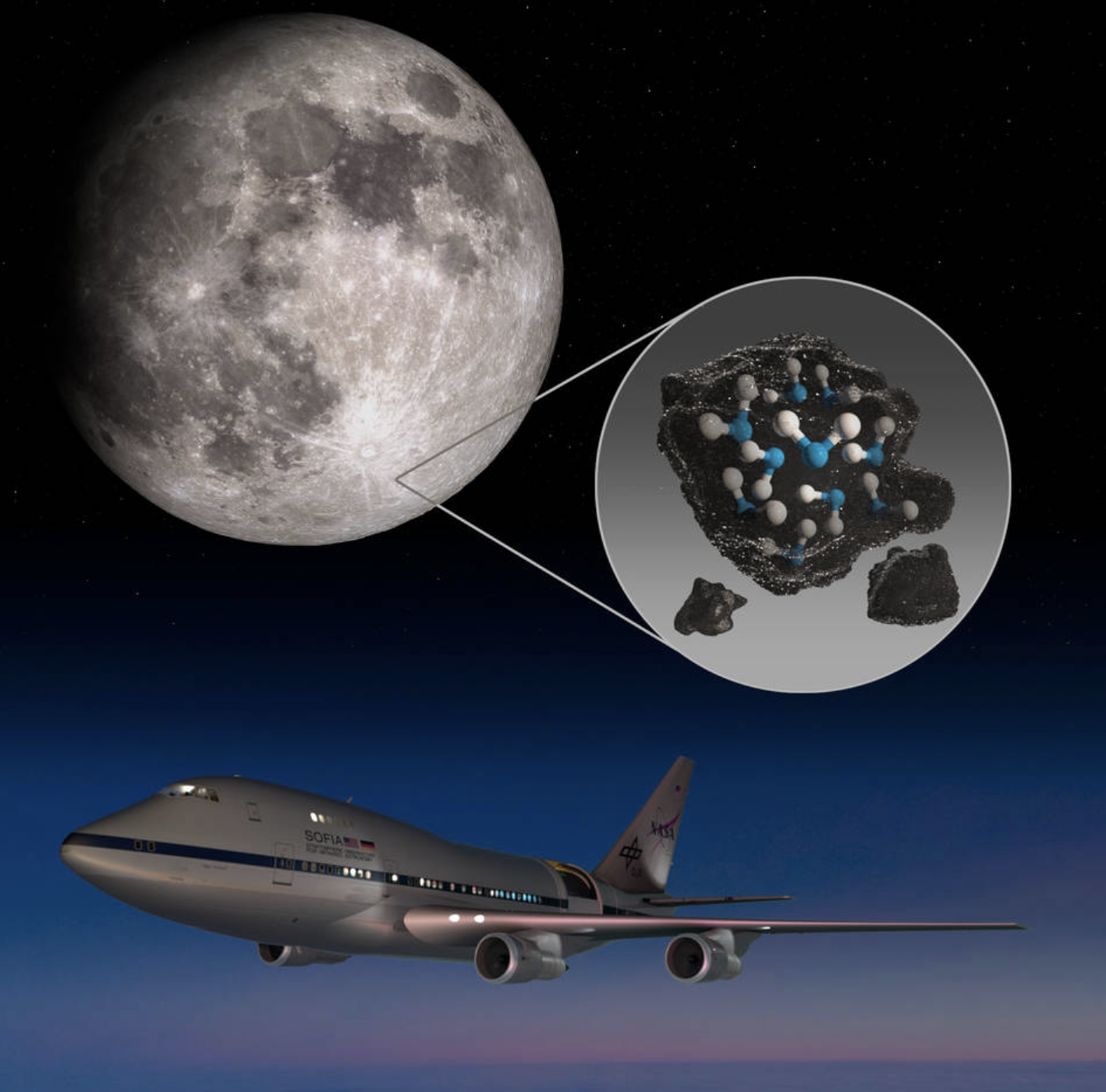Long hours at the library and countless lectures pay off when you can produce a piece of work that’s exciting. Sometimes it can be helpful to learn about what other students are working on in order to not only understand what it means to be doing research while in your undergraduate degree, but also to gain inspiration from their triumphs. Take a look at some notable current students and the topics they studied.
Physics Beyond the Standard Model: X plus and X minus
Miriam Hewlett
At present the Standard Model (SM) of particle physics is our best description of what occurs at the subatomic level, but it is known that this description is incomplete. Experiments investigating the possibility of new particles and interactions are some of the most prominent in modern physics. For this research the effects of additional vector bosons beyond the SM, X plus and X minus, on electron-positron collisions were examined at the tree level. Such collisions are outlined for Belle-II, an upcoming experiment at KEK. The X plus/minus model introduces direct CP violating phases in the coupling of X plus to anti-fermions and X minus to fermions. Results were calculated in Mathematica with the use of the Feyncalc package, and are in the form of exclusion plots displaying allowed ranges of physical parameters associated with the additional particles.
Interval Estimation for Risk Analysis with Nonquantal Data
Dewi Tanasia Saputra
In the literature of low-dose risk assessment, Piegorsch et al. (2005) proposed five approaches to construct simultaneous confidence bounds with nonquantal data and they recommended Akahira’s Cornish-Fisher expansion method. In this thesis, a generalized confidence interval method proposed by Weerahandi (1995) is used to construct simultaneous confidence bounds for low-dose risk assessment when sample sizes are large. We apply small sample asymptotic methods to obtain interval inference for risk assessment. Simulation studies are conducted to compare their performances based on the coverage probability. The application of the proposed methods is demonstrated by a real data example.
Bay of Fundy Tidal Power: Analysis of Tidal Velocity Data
Dillon Burgess
Models have indicated that 2500 MW of energy could be extracted from the tidal currents of the Bay of Fundy. Harnessing this energy has proved to be a difficult task, with the characteristics of the tidal currents needing to be analyzed and understood before a turbine can enter the water. Using a cabled Acoustic Doppler Current Profilers (ADCP), a year long data set of the tidal velocity at a location in Grand Passage was gathered. Unfortunately, the data sets have several data gaps, when the instrument malfunctioned. The ADCP data can be analysed by performing a harmonic analysis, which produces amplitudes and phases of the tidal constituents. Each tidal constituent represents how an aspect of the periodic change in the relative positions of the Earth, Moon and Sun contributes to the time series data. Tidal velocities can then be reconstructed with the results from the harmonic analysis to generate a continuous time series for a full year. The difference between the ADCP data and reconstructed data is used to analyse the component of the velocity that is not related to the tidal harmonics, as is likely turbulence.
Design and Construction of an Excitation Spectrometer
Ms. Alejandra Maria Fuentes
One method to study the optical properties of materials is by optical excitation spectroscopy. In excitation spectroscopy, a nearly monochromatic light source is used to irradiate the sample at different wavelengths, and a spectrometer is used to record the spectrum of the emitted light at each incident wavelength. Hence, both emission and excitation spectra are recorded at the same time. An emission spectrum consists of the wavelength distribution of the light emitted by the sample, measured at a fixed excitation wavelength. On the other hand, an excitation spectrum is the light intensity emitted at a fixed emission wavelength, over a range of excitation wavelengths. Both spectroscopic methods are useful in studying optical transitions occurring in a material. My project involved the design, construction, and calibration of an excitation spectrometer. LABVIEW programs were written to automate the experimental apparatus (monochromator, beam blanker, spectrometer), as well as perform the data analysis. The data could then be investigated in three dimensions: excitation wavelength, emission wavelength and intensity. This excitation spectrometer was then used to study the luminescent properties of geological rock and powder specimens, and a liquid chlorophyll sample.
Biomarker Identification for Dementia and Brain Tumour Tissue Characterization with Magnetic Resonance Imaging
Thalia Magyar
Magnetic resonance imaging (MRI) is useful for diagnosing brain disorders. For instance, it can be used for stroke, Alzheimer’s disease, multiple sclerosis (MS), and a host of other debilitating neurodegenerative disorders. Yet, the correlation between quantitative MRI metrics and tissue pathology is not yet fully developed. My research focusses on progress toward strengthening correlations through several analysis techniques I have developed. Images from different types of quantitative MR methods are distorted in different ways and image contrast can be different which makes voxel-by-voxel quantitative comparisons difficult. Multimodality images, for instance, position emission tomography images and MR images, are collected with different resolutions and the contrast within the images varies due to different tissue properties. I am developing robust image registration, that is, image aligning techniques, so that comparisons can be done. The Magnetic Resonance Microscopy Centre in Winnipeg now has the capability to perform simultaneous PET and MR imaging. Direct comparisons between cerebral flood flow maps and PET measurements can be done when the images are correctly registered. Direct comparison between MR image findings and histology are best done when the two types of images are co-registered. In my research I work toward these registrations and quantifying image comparisons on a voxel-by-voxel basis. I will demonstrate these methods on control samples as well as disease samples such as brain cancer and Parkinson’s disease.
An Angular Analysis of the Rare B ! K*µ + µ- Decay Using AdS/QCD
Ryan MacGibbon
Using something called Anti de-sitter/Quantum Chromodynamics (AdS/QCD), you can predict the complete set of angular observables in the rare B ! K*µ + µ- decay using light-front holographic B ! K* transition form factors, just as you can with the traditional method of Lattice QCD. Light front holographic AdS/QCD is a relatively new and amazing technique that maps 4-dimensional non-perturbative QCD field theory to a dual gravity curved space string theory! This works because when fields under the quantum field theory are strong interacting, the ones using gravitational theory are weak interacting, and vice-versa. This means that we can use perturbation theory in this 5-dimensional dual gravity theory, then map it back to QCD field theory, where comparisons and further calculations can be made. Since perturbation theory is a more accurate method than nonperturbative methods, this will hopefully allow for better approximations for our particle interactions, resulting in greater precision in our decay models. We are applying this adapted AdS/QCD technique to B-Meson Physics, and more specifically in my case, to the angular observables of B Mesons! Angular observables are a neat tool for measuring the decay angles in different particle decay, and are a useful means of discovering New Physics and hopefully in the future, changing the Standard Model of Particle Physics and our understand on how the physical world works!!!




